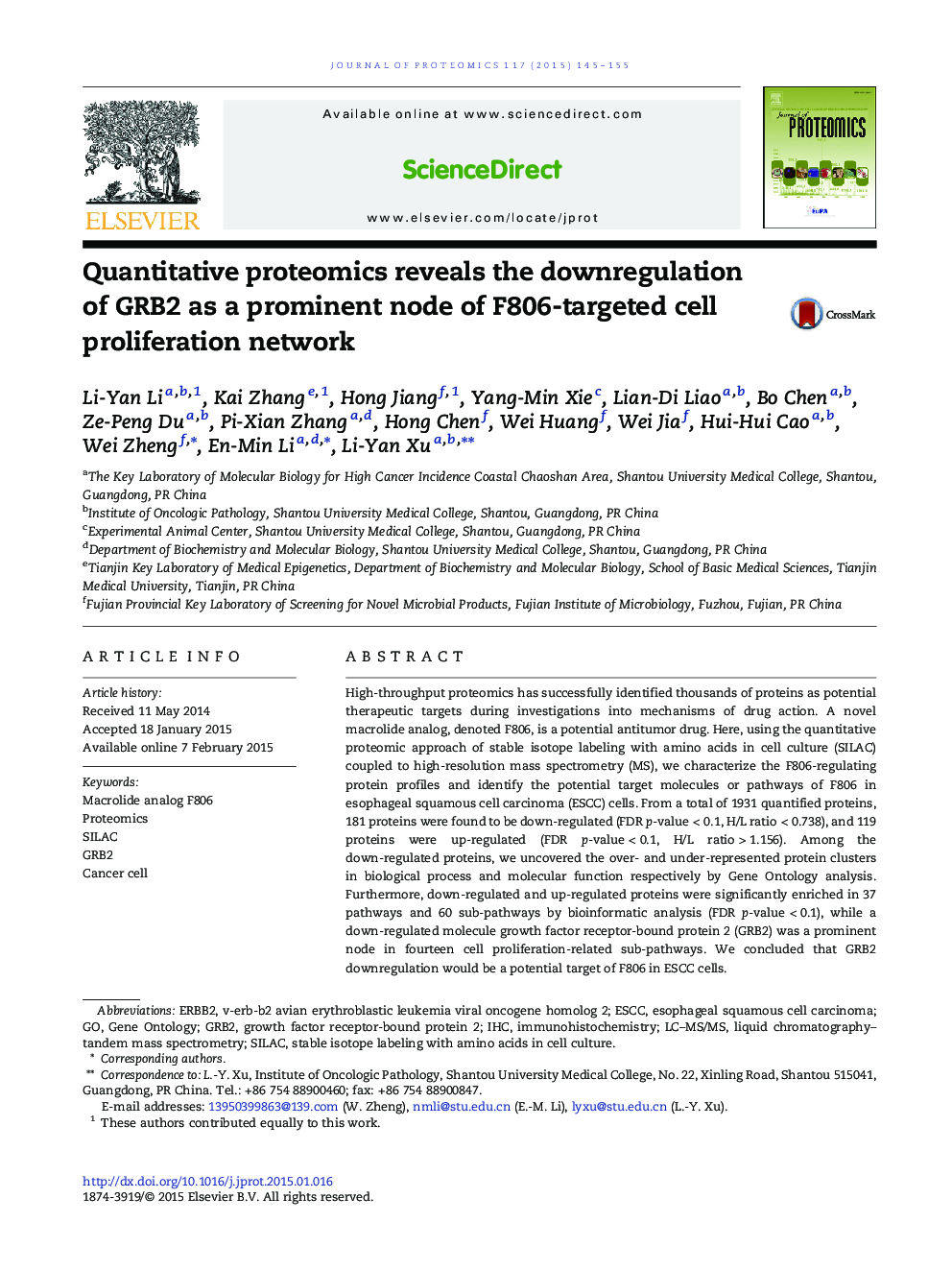| کد مقاله | کد نشریه | سال انتشار | مقاله انگلیسی | نسخه تمام متن |
|---|---|---|---|---|
| 1225709 | 1494763 | 2015 | 11 صفحه PDF | دانلود رایگان |

• 181 down-regulated proteins were identified in F806-treatedESCC cells.
• 60 enriched sub-pathways were identified in F806-treated ESCC cells.
• GRB2 was a prominent node in the F806-targeted cell proliferation network.
High-throughput proteomics has successfully identified thousands of proteins as potential therapeutic targets during investigations into mechanisms of drug action. A novel macrolide analog, denoted F806, is a potential antitumor drug. Here, using the quantitative proteomic approach of stable isotope labeling with amino acids in cell culture (SILAC) coupled to high-resolution mass spectrometry (MS), we characterize the F806-regulating protein profiles and identify the potential target molecules or pathways of F806 in esophageal squamous cell carcinoma (ESCC) cells. From a total of 1931 quantified proteins, 181 proteins were found to be down-regulated (FDR p-value < 0.1, H/L ratio < 0.738), and 119 proteins were up-regulated (FDR p-value < 0.1, H/L ratio > 1.156). Among the down-regulated proteins, we uncovered the over- and under-represented protein clusters in biological process and molecular function respectively by Gene Ontology analysis. Furthermore, down-regulated and up-regulated proteins were significantly enriched in 37 pathways and 60 sub-pathways by bioinformatic analysis (FDR p-value < 0.1), while a down-regulated molecule growth factor receptor-bound protein 2 (GRB2) was a prominent node in fourteen cell proliferation-related sub-pathways. We concluded that GRB2 downregulation would be a potential target of F806 in ESCC cells.Biological significanceThis study used SILAC-based quantitative proteomics screen to systematically characterize molecular changes induced by a novel macrolide analog F806 in esophageal squamous cell carcinoma (ESCC) cells. Followed by bioinformatic analyses, signal pathway networks generated from the quantified proteins, would facilitate future investigation into the further mechanisms of F806 in ESCC cells. Notably, it provided information that growth factor receptor-bound protein 2 (GRB2) would be a prominent node in the F806-targeted cell proliferation network.
Figure optionsDownload high-quality image (241 K)Download as PowerPoint slide
Journal: Journal of Proteomics - Volume 117, 18 March 2015, Pages 145–155